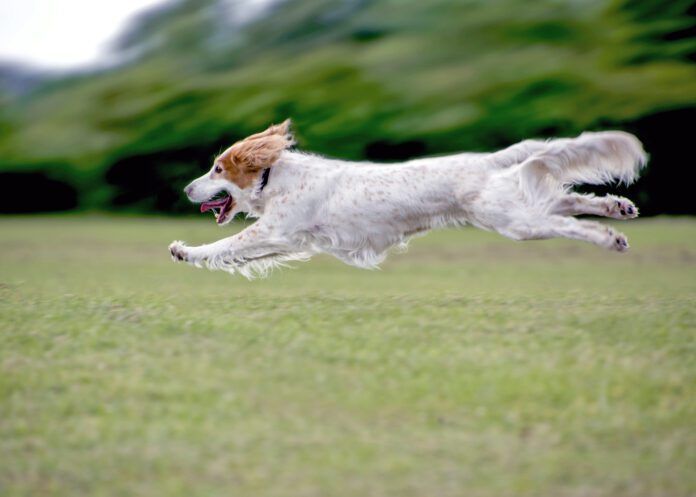As the field of canine nutrition continues to evolve, more pet owners are turning their attention to diets that mimic the natural eating habits of dogs’ wild ancestors. In this pursuit, diets that are high in protein and fat, and low in carbohydrates, are gaining significant traction. This nutritional model is often linked to improved weight management, reduced inflammation, better skin and coat health, and in some cases, may even contribute to the management of certain chronic conditions.
High-protein, low carbohydrate diets are designed to support lean muscle maintenance, promote healthy metabolic function, and reduce the likelihood of blood sugar spikes and energy crashes. These diets closely resemble what dogs would eat in the wild—a meal made up primarily of animal protein and fat, with very few carbohydrates. By contrast, most kibble diets contain high inclusions of grains or starchy vegetables such as corn, wheat, rice, peas, and potatoes. While these ingredients help bind the kibble and make it shelf-stable, they contribute a significant carbohydrate load to the diet.
Best Low Carb Dog Food Ingredients
The best low-carbohydrate dog foods, particularly those that are dry and commercially available, are typically marketed as grain-free or high-protein formulas. However, the term “grain-free” can be misleading. Many of these formulations substitute grains with other starchy ingredients such as legumes, sweet potatoes, or tapioca. Although grain-free, these substitutes still contribute to the carbohydrate content and may not deliver the metabolic benefits associated with a true low-carb diet. Identifying low-carb dry dog food requires careful label reading and an understanding of the nutritional breakdown beyond what is printed on the bag.
In low-carb dry dog food, the protein content should be derived from high-quality animal sources that provide the essential amino acids dogs need for muscle repair, immune function, and enzyme production. High protein intake is especially important for active dogs, working breeds, and seniors, who are prone to muscle wasting and require extra support to maintain lean body mass.
When transitioning a dog to a high-fat, low-carbohydrate diet or a ketogenic regimen, it is important to do so gradually. Sudden changes can lead to digestive upset, and some dogs may require a period of adjustment as their metabolism shifts to accommodate the new fuel source. During this transition, it is helpful to observe changes in energy levels, appetite, stool consistency, and coat condition to ensure the dog is adapting well. Over time, many owners report positive changes, including increased stamina, reduced itching or inflammation, improved coat shine, and more stable behavior and mood.
High Fat Dog Food
Equally important in this dietary approach is the fat content. High-fat dog food plays a crucial role in energy production, particularly when carbohydrate intake is minimized. Fats supply more than twice the energy per gram than proteins or carbohydrates and serve as a dense fuel source for dogs, especially those engaged in high levels of activity. In addition to being a source of energy, dietary fat supports cell structure, hormone production, nutrient absorption, and the maintenance of healthy skin and coat. Brands such as Stella & Chewy’s Super Beef Frozen Raw Dinner Morsels and Instinct Adult Frozen Frozen Raw Bite 85% Alaskan Pollock Recipe are low-carb options available on the market for pet owners looking for a low-carbohydrate food.
High-Protein, High-Fat Dog Food
A high-protein, high-fat dog food closely aligns with a ketogenic “keto” diet model. The ketogenic diet for dogs is an even more specialized nutritional approach that deliberately shifts the dog’s metabolic state from glucose-burning to fat-burning. When carbohydrate intake is sufficiently low and fat intake is high, the dog’s body enters a state known as ketosis. In ketosis, the liver converts fat into molecules called ketones, which serve as an alternative energy source to glucose. This metabolic shift may offer therapeutic benefits for dogs with certain health conditions such as epilepsy, obesity, diabetes, and even some types of cancer, where controlling blood sugar and insulin spikes is a priority.
Unlike traditional dog foods, keto diets for dogs are designed with macronutrient ratios that mirror a true ketogenic profile—typically consisting of about 70% to 80% fat, 20% to 30% protein, and very few carbohydrates, usually less than 10%. These diets can be commercially purchased as raw, freeze-dried, or gently cooked formulations, or even prepared at home under veterinary guidance. A proper ketogenic dog food must be carefully formulated to avoid nutrient deficiencies and ensure adequate intake of essential vitamins, minerals, and amino acids. Unlike humans, for whom ketosis is often used as a method for weight loss or performance enhancement, a keto diet for dogs is primarily adopted for its therapeutic applications.
Ketosis in Dogs
Achieving and maintaining ketosis in dogs requires strict adherence to the macronutrient ratios. This means avoiding starchy treats, table scraps, and other hidden sources of carbohydrates that can knock a dog out of ketosis. Monitoring your dog’s response is also essential, as not every dog is a candidate for a ketogenic diet. Dogs with pancreatitis, fat-malabsorption disorders, or certain liver conditions may not tolerate high-fat intake well and should be evaluated by a veterinarian before any dietary transition.
The rise in popularity of ketogenic and low-carb feeding approaches has led to a new generation of specialized products on the market. Brands offering keto dog food have begun to focus not just on macronutrient content but also on ingredient quality, sourcing proteins and fats from grass-fed meats, wild-caught fish, and organic oils such as coconut or olive oil. These premium diets may also incorporate anti-inflammatory nutrients like omega-3 fatty acids and antioxidants to support immune function and reduce oxidative stress. Brands such as Bones & Co. and Ketona offer keto-friendly, ready-to-feed, complete and balanced diets for pet owners looking for a keto diet for their pets.
While keto and low-carb diets are not appropriate for every dog, they can offer significant benefits when used appropriately and under veterinary supervision. For pet owners considering this type of feeding, it is recommended to start by consulting with a holistic or integrative veterinarian who can help assess the dog’s individual needs and health status. Bloodwork may be necessary to ensure the diet is safe and to monitor for any changes that might indicate metabolic stress or nutrient imbalances.
In the world of canine nutrition, the one-size-fits-all model is quickly becoming obsolete. Dogs are individuals with unique health profiles, lifestyles, and genetic predispositions. What works for one may not work for another. However, the increasing interest in high protein, low-carb, and ketogenic dog food is indicative of a broader trend toward biologically appropriate feeding and a desire to give pets the best possible chance at a long, vibrant life.






